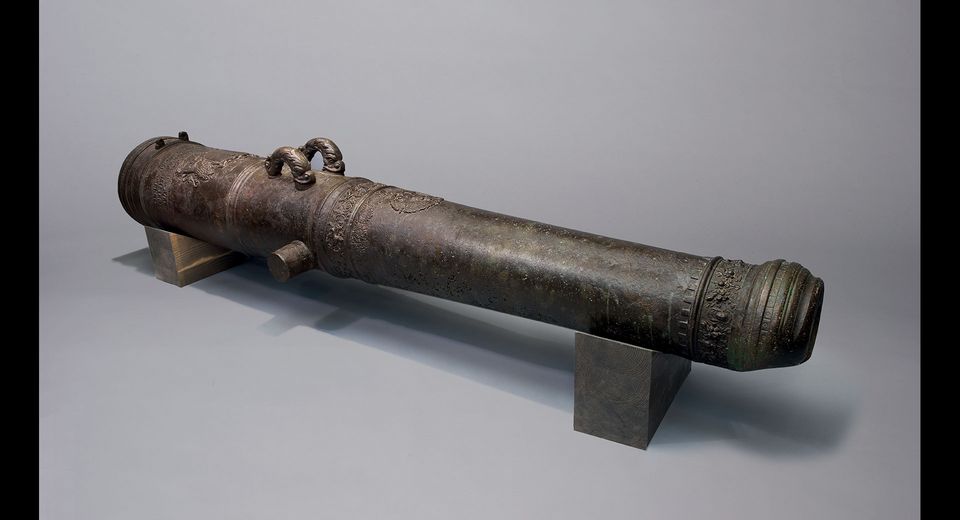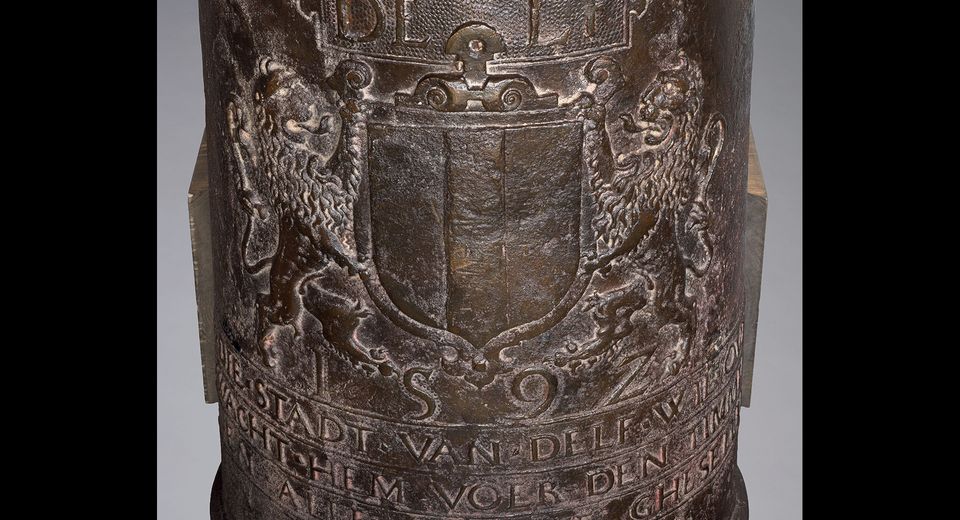24-pounder demi-cannon from the Mauritius
Port-Louis
In 1609, a Dutch merchant ship, the Mauritius, ran aground near Cape Lopez in Gabon. After the disaster, much of its cargo was brought back to Holland by the sailors who had survived the shipwreck. The wreck was excavated in 1986. This richly decorated cast-iron 24-pounder demi-cannon was one of the ship’s 28 artillery pieces.
The wreck of the Mauritius
In 1609, the Mauritius, a ship belonging to the Dutch East India Company, the first major commercial shipping concern, ran aground off Cape Lopez in Gabon. The Cape was an essential stopover for ships returning from the Indies, in order to stock up on water and food.
The forty-metre three-master was built in Amsterdam circa 1601 and, after the disaster, much of its cargo was brought back to Holland by the sailors who had survived the shipwreck.
The wreck, which was discovered during an oil exploration operation, lay a dozen metres deep, its remains buried under a mound of zinc ingots.
In addition to the cannons, deck fittings and everyday items, the 1986 excavation uncovered almost 140 tonnes of pepper in sacks, which, along with the zinc, accounted for most of the ship’s cargo. The sherds of blue and white porcelain found were few in number, suggesting that the artefacts had been brought back from China as samples.
The demi-cannon
 Enlarge image : 3-oeuvre_port_louis_canon_cartouche-atelier-de-charpentier.jpg
Enlarge image : 3-oeuvre_port_louis_canon_cartouche-atelier-de-charpentier.jpg
This richly 24-pounder demi-cannon was one of the ship’s most richly decorated cannons. It is made of cast iron and is 3.20 metres long. An engraved cartouche flanked by lions contains the city of Delft’s coat of arms. The breech knob and cascabel are engraved with shells and acanthus leaves, along with the following inscription: “Coenraad Anthonisz m’a fait à La Haye en 1592” (Coenraad Anthonisz made me in The Hague in 1592).
A second cartouche in the middle of the weapon depicts a carpenter’s workshop containing a set square, a mallet, a chisel, a pair of compasses, an auger and a ewer. The carpenter is wearing a cocked hat and holding an adze. Carpenters played a major role in the manufacture of cannons from the 14th century onwards, creating prototypes in hard wood in order to facilitate the metalsmith’s and caster’s work.
Conrad Anthonisz was responsible for this magnificent cannon. His brother Willem Tonnisen, literally Willem son of Thonis, cast the Mauritius’ bell, which is also on exhibition in the Museum. The two belonged to one of Holland’s two greatest families of casters in the 16th and early 17th centuries.
Collection highlight
The essential works to see during your visit to the Musée national de la Marine in Brest, Port-Louis, Rochefort, Toulon, and soon in Paris.



